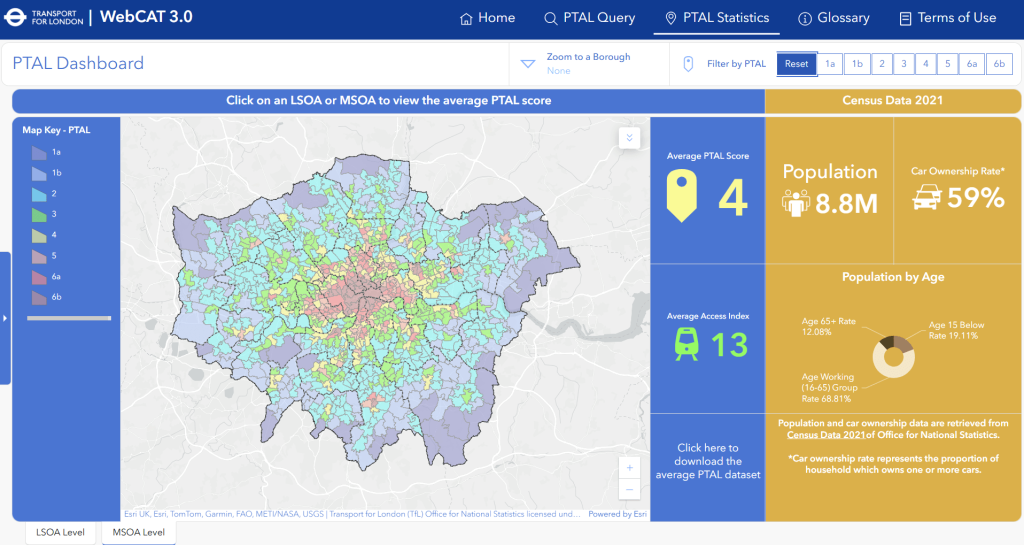WebCAT 3.0 launched – Will the new PTAL scores affect your development?
Transport for London (TfL) has recently released its WebCAT 3.0 Public Transport Access Level (PTAL) toolkit.
This reflects improvements made to London’s public transport network in recent years — from the launch of the Elizabeth line to upgrades across the DLR and enhancements to bus services.

At The Transportation Consultancy (ttc), we’re here to help you make sense of these PTAL score changes, and to understand how they may affect your future developments.
What is the PTAL Toolkit — and what does it show?
In simple terms, the PTAL toolkit provides a measure of how well connected a site is to public transport. The scores take into account the walking distance to local stations and stops, along with the frequency of services.
WebCAT 3.0 updates the original 2015 dataset with the latest PTAL scores — giving planners, developers, and transport consultants a clearer view of today’s public transport landscape. Alongside the familiar 100m x 100m grid-based PTAL scores, the new version also introduces mapping by Census areas (MSOA and LSOA), offering richer insights when combined with local data on population and car ownership.
Who uses WebCAT 3.0 PTAL — and why does it matter?
WebCAT is designed for the professional planning community and helps planners assess how accessible a site is by public transport. This is a vital consideration when determining the appropriate density of housing and shaping the future development of London’s neighbourhoods.
PTAL scores also feed into key planning factors such as car and cycle parking requirements, with higher PTAL areas often requiring fewer parking spaces — or in some cases, car-free developments in line with London Plan standards.
How will these updates affect developments?
For many sites across London, the revised PTAL scores may bring changes to what is required or allowed. For example, sites that now fall within a higher PTAL area may need to reduce car parking provision or shift to a car-free approach. This in turn can influence site layout, landscaping, cycle parking provision, and how communal spaces, such as play areas, are integrated into the scheme.
How can ttc, a Transport Planning Consultancy, help?
At ttc, we closely review the revised PTAL scores when providing transport planning advice to clients. We help identify how these changes might affect your proposals and ensure that transport needs are balanced effectively with other aspects of site design.
By engaging with the design team early in the process, we can advise on matters such as parking provision and sustainable transport strategies, helping you shape a development that meets planning requirements while also supporting broader project goals.
If you’d like to know more about the new WebCAT 3.0 PTAL toolkit — or would like to discuss how these changes may impact your site — contact us.





